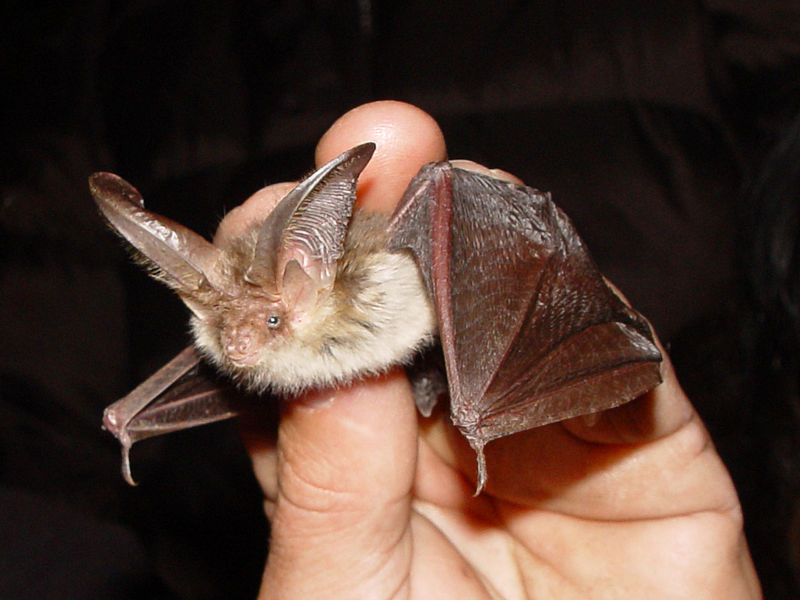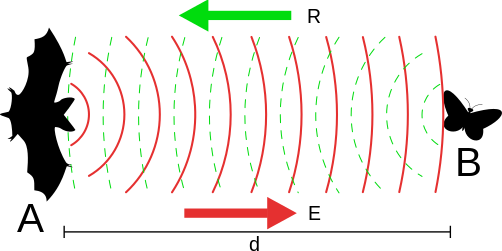Hello everyone! Welcome back to my blog! First, as always,
I’ll give you guys updates on the stuff going on around here.
The casting call for the play, “A Big Misunderstanding” is
not planned yet, so I can’t give any information on that. Unfortunately, the chances are that the play won't happen next year so we might just have to cancel it. However, there is a small chance of it happening, so if you would
like to be involved in the production (because we still have three speaking roles and 12 non-speaking roles to fill), please
send me an email to animaladventures@aol.com and I’ll
be sure to see what I can do.
If you enjoyed my latest stop-motion film, you will be glad
to know I will be working on my fourth one soon (if you missed it, please click
this link: ANIMAL FACE-OFF: HIPPO VS.
BULL SHARK). So what is my fourth one? Well, it’s the third episode in my
Animal Face-Off series called: Elephant vs. Rhino. This face-off will be taking
place in eastern Africa. Don’t think elephants and rhinos would fight in the
wild? Believe me! They normally are quite harmonious with each other, but when
they get feisty, all fury breaks loose! I don’t want to give away the outcome
of the fight though, you’ll just have to wait for that. I plan to start
production somewhere between now and the second week of November. I can’t wait.
This will be one of my favorite episodes no doubt because elephants are some of
my favorite animals (don’t think I’ll take it easy on the elephants though!).
Who Will WIN?!?
 |
| African Elephant |
vs.
 |
| White Rhinoceros |
Now, we all know it, but many of us have different reactions
to this: Christmas is only 68 days
away! Some of us are really excited and 68 days is ages away. Meanwhile to some
of us, 68 days is as a week! But regardless of the reaction, it’s coming!
This time of year, one kind of animal is seen around this
time of year quite often. This kind of animal is none other than the bat! Bats
are everywhere, they’re in movies, Halloween decorations, scary novels, and
spooky video games. Perhaps one of the most famous “bat” of all is Dracula, a
vampire that supposedly turns from man to vampire bat and vice versa. But how
much do you really know about these little flyers? Is everything you’ve learned
about bats really true? Take this pop quiz and after that we’ll delve into the
world of the bats.
 |
Where are bats origins?
True or False: Bats are Birds
True or False: All bats fly around by night searching for
people to blood-suck
True or False: Bats occasionally get stuck in people’s hair
True or False: Bats are blind
True or False: All bats roost in caves
True or False: Most bats carry rabies
Now, I’ll tell you the answers as we learn about these
creatures and face our fears. There are four groups of animals that have been
gifted with the power of flight. These animals are birds, the extinct
pterosaurs (or flying reptiles), insects and bats. All other “flying” creatures
such as the flying squirrel, flying snake and the flying lemurs don’t actually
fly – they glide. There is a
difference. Bats are mammals but not rodents as commonly believed. Bats are the
only mammals that can actually fly. We know this because bats are covered with
fur, and only mammals have fur (pterosaurs and insects also have “fur”, but
it’s a different type of fur).
Most scientists will tell you that bats evolved from little
shrew-like mammals that chased insects by jumping from branch to branch and
eventually evolved a wing membrane and were able to fly. But this is incorrect.
Bats actually were created around 6,000
years ago when God created all the flying and swimming creatures on Day 5 of
the Creation week (notice, this is before
shrew-like animals came into existence on Day 6), just as the Bible says.
You may not know this, but there are actually hundreds of
species of bats. They range from creatures the size of a mouse, to creatures
with six-foot wingspans. Bats live in just about everywhere on the planet, in
just about every habitat and continent, except for Antarctica. They can be
found in jungles, deserts, mountains . . . just about everywhere. Bats are a
very complex group of animals, so we don’t have time to discuss them all today,
we will just discuss a few species.
There are two main groups of bats, the megabats and the microbats
(the ones we’re going to look at today). The difference between the two is
simple: Megabats are the really big,
or mega-sized ones, and Microbats
are the micro-sized ones. These are the bats we will look at today.
There are a lot of different species of microbats, and they
have a wide range of diets. Most eat insects, and some eat . . . or rather
drink . . . blood. But that’s not most bats. We’ll talk about the ones that
drink blood in a minute though. Anyway, as I said before, bats are just about
everywhere, and they are probably living near where you are too, it’s just that
they’re nocturnal, so you’d have to go out at night to see them.
Bats wings are very different from bird wings (they aren’t
just birds without feathers). Bird wings are consisted of the wing bone with
skin and feathers attached. But bat wings are made up of the bat’s fingers that
stretch out and have a special wing membrane in between them. Here are a few species:
 |
| Big Brown Bat |
 |
| Long-Eared Bat |
 |
| Vampire Bat |
.jpg/450px-Bat(20070605).jpg) |
| Horseshoe Bat |
 |
| Tent-Making Bats |
One common bat that lives a lot of places around the United
States is called the Big Brown Bat (one of my personal favorite microbats, it can be found above). These
bats grow about 4 to 5 inches long and have a wingspan of about 11 to 13 inches wide. Like
most other bats, the big brown bat eats insects including mosquitoes, moths, beetles and wasps that they catch while in flight. Now a common belief is that
bats are blind. Instead of sight, God gave them echolocation to find prey at
night. But wait, before we go into what echolocation is, first we must find out
if bats really are blind. And the answer is – they aren’t! So where’d that myth come about? Well, it may have
something to do with an experiment with a bat. One time, some people
blindfolded a bat to see if it could fly out of its cage (the bars had wide
spaces), and it did. So those people probably figured that it was blind since
it didn’t need eyesight to find its way out. (That also means the phrase, “Blind
as a bat,” is a misnomer) Now, echolocation is a special thing God gave the
bat.
 |
| The red lines represent the bat's sounds and the green lines represent the sound bouncing off the insect and to the bat's ears |
Echolocation works a lot like the sonar on a submarine. The trick is
simple: the bat makes sounds (too high for us to hear with our naked ears –
that is without special equipment) and the sounds bounce off objects around the
bat and they come back to the bat. This is how bats can find prey in total
darkness. Cool, huh? For big brown bats and other bats, this normally works out
just great . . . except for some species of moth. Bats love moths, but some
species of moths have a special “ear” that helps them hear the echolocation and
at the last moment they can swerve out of the way. It drives the bats crazy! So
that is why one bat has a special trick for catching those types of moths. It’s
called the Long-Eared Bat. The long-eared bat uses echolocation to find where
the moth is, but as it closes in for the kill, it turns its sonar off and just
uses those big ears to hear exactly where the moth is before bon appetite! By
the way, bats don’t get tangled in people’s hair. People probably thought this
because sometimes bats will seem to swoop down on people. But in fact, it’s the
insects that swoop down near the
people and the bat is merely following the insects!
Big brown bats are the bats we often see flying around at
night here in North America. They roost in large colonies that can be found in
caves or even sometimes in old barns (not all bats roost in caves, some even
roost in trees). Other than moths, they also eat mosquitoes, gnats, flies, and
can even take spiders out of their webs. Taking a spider off of its web is not
as easy as it sounds, as the bats can easily become tangled in the sticky silk.
However, they do manage. Don’t think bats are restricted to invertebrates (e.g.
spiders and insects), some species also specialize in fishing and “mousing”.
You read right, they go “mousing”! I’m not sure that’s a word, but they really
do hunt mice!
Bats however are not without predators, owls love to eat
bats. This is why bats love going out on the darkest of nights, as owls, which
rely on sight, can’t see very well in pitch black. Meanwhile bats use sound,
not sight to “see” so they don’t need any light.
It is true that most microbats eat insects, but there are
some with a more “horrific” diet. They drink blood and they are called Vampire
bats! Vampire bats, contrary to popular belief aren’t outside waiting to suck
your blood. First of all, they only live in central and south America! So
there’s no way a bat could suck your blood in the United States! And another
reason? There are only three species of bats that suck blood. Don’t think that
the United States has always been safe from Vampire bats though, fossils show
that they used to live in the Southwestern portion of the USA. If you lived
back then in the other parts of the USA, France, Canada, Australia, Africa,
Asia and etc. you’d always be safe – Vampire bats never lived in any of those
places.
 |
| You have to admit, this Vampire Bat's face is absolutely cute! |
But Vampire bats aren’t really that bad once you get to know
them. So what do they do exactly? Well, a Vampire bat will leave its shelter at
nighttime to find a large animal, perhaps a cow or a chicken (I know chickens
aren’t large too us, but to a little bat they’re huge!), or perhaps a person.
Then they land on the ground near the animal and use those sharp teeth to bite
into the leg and draw blood. But perhaps the term “blood-sucking” is incorrect.
For these bats don’t suck blood, they lap it up. Doesn’t that sound nicer?
Special stuff in the bat’s saliva stop the blood from clotting, so the bat can
just go on feeding. Then the bat will get up in the air (often making a quick
bathroom break so it isn’t too heavy to fly home) and go back to its cave.
These bats may seem mean, but they really have a “tender soul”, when arriving
at their home cave, some bats didn’t get the chance to fly out and get some
blood, maybe they were injured or sick. Then these hungry bats merely lick the
side of the blood-stuffed bat’s head and the bat will cough up some drink for
the hungry bat to eat, er . . . drink. See, Vampire Bats even make donations to
help the poor!
As we just learned, bats are terribly misunderstood. They
don’t get tangled in your hair, they aren’t (all) waiting there to suck blood,
and they also don’t always carry rabies. It’s true that some bats might have
rabies, but they are just as likely to get rabies as a dog or cat. So it would
be unfair to call bats “rabies carriers”. Bats have been mistreated for years
because of their bad rap. People have killed whole innocent bat colonies (and these
weren’t even vampire bats), just because they didn’t understand them. We really
should take care of the bats. God provided them to eat harmful and pesky
insects and some bats that we didn’t discuss also work as pollinators for many
plant species. Sometimes, bats need a little more helping hand though than just
not killing them.
Check out the bat in the picture below:
 |
| That yucky white stuff on the cute little face of this bat is a fungus. |
Notice that white stuff on its nose? Well, that’s a fungus.
Bats with fungus growing on their noses have a disease called white-nose syndrome (WNS). It isn’t
completely understood, but it is killing millions of bats, and millions of bats
dead means billions of more flies,
gnats and mosquitoes! So when a 13-year old named Gwynne Domashinski, needed a
project for a science fair, she chose to study WNS and look for a solution. Her
theory was that perhaps the moistness in the caves was causing the fungus to
grow on the bats, since fungus grows extremely well in moist places. Perhaps by
lowering the humidity the fungus will stop growing. So Gwynne got in touch with
a bat scientist named Deeann Reeder and Gwyanne was invited to the lab to test
the ideas about WNS and the humidity. It will take time to unravel the secrets
of WNS, but every little thing helps (by the way, Gwynne won third place in the
science fair in a statewide competition!).
So there’s a lot more to bats than what meets the eye. Even
if we don’t get the opportunity to do something like Gwynne did (who’s was only
13 at the time), there are still ways we can help bats. For instance, we can
educate other people about bats and what their job is in nature. And we can
also preserve bats habitat and give them places to sleep in the form of bat
houses (sort of like a bird house). We should be good stewards of bats, just
like God had instructed us in the book of Genesis in the Bible, because bats
are really wonderful creatures.
Thanks for stopping by today. Please be sure to come back
next Thursday to get more facts on really cool things God made for us to enjoy
and more! Bye for now!
PS: Have a puzzling question about nature, animals (including
dinosaurs), God, the Bible, myself, my book, “THE KING ON A CROSS” or etc.?
Post your question as a comment or send me an email to animaladventures@aol.com.
PS 2: What’s the latest Smiley’s News headline? Check it out
by clicking the link.
PS 3: Please help us expand Exploration Books Pedia, it’s
free!
No comments:
Post a Comment